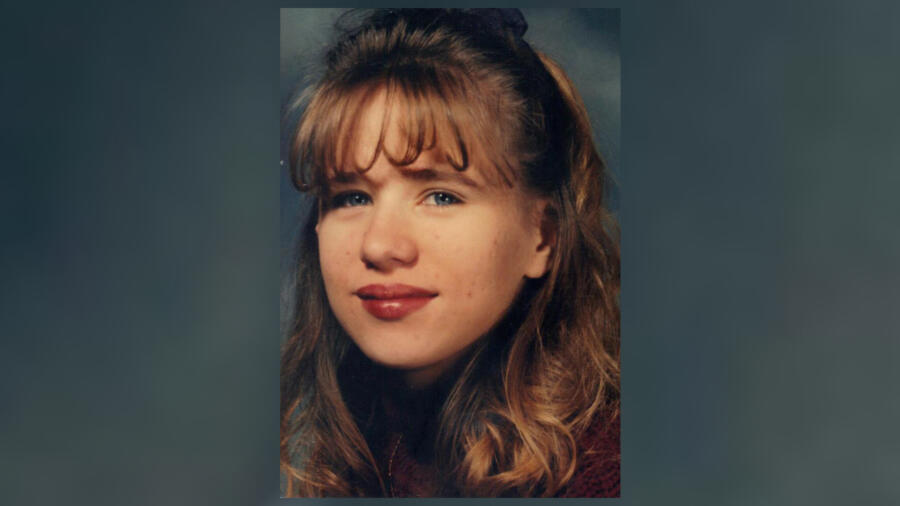The Vanishing
In the fall of 1999, 22-year-old Sherry Leighty—a mother of three with a shy smile and a gentle heart—disappeared without a trace from Altoona, Pennsylvania. Her sudden absence sparked fear, confusion, and heartbreak. For years, her family clung to hope, whispering prayers into the silence, yearning for answers that never came.
Police initially treated her as a runaway. But her loved ones knew better. Sherry wouldn’t leave her children. Not without saying goodbye. Not without a word.
The years passed. Leads dried up. Her case faded into the cold-case archives—until a single phone call, nearly 15 years later, shattered the silence.
The Call That Changed Everything
In early 2013, Aaron Leighty—Sherry’s ex-husband—was on the phone with his father, Kenneth Leighty, when he heard something chilling.
Kenneth confessed to killing Sherry.
He claimed it had been “an accident,” a tragic moment of rage. But what came next was darker still: Kenneth had buried her body in a remote part of Warriors Mark Township, near a family hunting cabin.
Authorities moved quickly, reopening the investigation. And to locate the long-buried truth, they turned to an expert who had unearthed more than just bones—Dr. Dennis Dirkmaat, one of the nation’s leading forensic anthropologists.
The Scientist Called to Unearth the Truth
Dr. Dirkmaat wasn’t new to scenes of tragedy. With nearly four decades of experience, he had helped identify victims of disasters, murders, and hidden crimes. But even he knew this case would demand precision, patience, and persistence.
With the help of cadaver dogs, forensic experts, and state police, Dr. Dirkmaat began the first search at a wooded area near the Leighty family cabin. It was cold, remote, and filled with decades of overgrowth.
They found nothing.
The Second Confession and a Crucial Clue
Two weeks later, under increasing pressure, Kenneth Leighty confessed again—this time offering new details. He directed authorities to a different area, insisting he had buried Sherry near a rock wall.
That small detail—a rock wall in the woods—became the team’s only clue.
Dr. Dirkmaat and his crew launched a systematic grid search, digging test pits every three feet along the wall. Twenty-five test pits later, hope was fading.
Then, a shovel hit something.
At first, it was thought to be a pipe. But in the woods, far from plumbing, there were no pipes.
It was bone.
The Bones Tell a Story
Carefully, respectfully, the team continued excavating. Sherry’s leg bones were uncovered first—tibia, fibula, and the delicate bones of her foot. The positioning revealed the grim truth: this was not a proper burial.
It was a makeshift grave, hastily prepared, likely after partial decomposition had begun. She hadn’t been placed with care—she had been hidden, discarded like a secret no one was supposed to find.
The forensic team worked day and night. DNA testing and dental records confirmed the identity: the remains were those of Sherry Leighty, long-missing but never forgotten.
The Silent Witness: Evidence Buried in the Bones
Back in the lab, the autopsy began.
The bones whispered what Kenneth never would. Sherry hadn’t died accidentally. She had suffered blunt force trauma to the skull, a fatal blow with unmistakable intent.
Forensic science had spoken: this was murder.
A Killer’s Deal and a Family’s Pain
Despite the damning evidence, Kenneth Leighty accepted a plea deal in exchange for leading investigators to the body. He pleaded guilty to third-degree murder and was sentenced in 2014 to 7 to 14 years in prison. He remains incarcerated after being denied parole in 2021.
For Sherry’s family, the pain didn’t end with the sentencing.
“We spent years searching, wondering if she was out there alive, needing help,” her sister said. “Now we know. But knowing doesn’t erase the pain.”
The Power of Persistence—and Forensic Science
This case wasn’t solved by chance. It was solved through relentless investigation, forensic expertise, and the work of scientists like Dr. Dennis Dirkmaat, who treat every buried bone like a silent testimony.
“The body always tells the story,” Dirkmaat once said. “Even decades later, the earth gives up its secrets.”
In Sherry’s case, it did.
A Legacy of Love and Justice
Sherry Leighty’s children grew up without their mother. But now, they have answers. Closure is never complete, but it’s something. And her name will not be lost in the cold files.
This case serves as a reminder to families of the missing—don’t give up. Science is getting better. Stories buried in soil can still come to light.
And for those who think they’ve buried the truth?
There’s always someone listening. Always someone digging.
FAQs About the Sherry Leighty Cold Case
Who was Sherry Leighty?
A 22-year-old mother of three from Altoona, Pennsylvania, who disappeared in 1999.
Who killed her?
Her father-in-law, Kenneth Leighty, confessed to killing her and burying her body on his property.
How was the case solved?
In 2013, Kenneth confessed, and forensic anthropologist Dr. Dennis Dirkmaat helped locate and identify Sherry’s remains.
What was the sentence?
Kenneth Leighty pleaded guilty to third-degree murder and was sentenced to 7–14 years in prison.
Why did it take so long to find her body?
The case went cold for 14 years. Only after Kenneth confessed and forensic science intervened was the truth uncovered.

